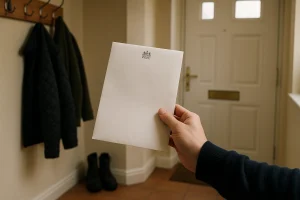Table of Contents
ToggleWith rising energy prices continuing to strain household budgets across the UK, many are looking for reassurance that support is on the way. This winter, over 250,000 families will receive official confirmation of a £150 discount on their energy bills, part of the Government’s widened Warm Home Discount Scheme.
The scheme has undergone a major expansion, ensuring millions more receive help, including many who were previously excluded. The vast majority will benefit automatically, with the discount applied directly to their energy account, while some will be required to provide additional information.
If you’re unsure whether you qualify or how the process works, this guide will explain everything you need to know about the £150 energy bill confirmation in the UK, who is eligible, how to confirm your payment, and what the long-term government strategy looks like.
What Is the £150 Warm Home Discount and Why Has It Been Expanded?

The Warm Home Discount Scheme was introduced to help low-income households cope with increasing energy costs during the winter. In response to the ongoing energy affordability crisis, the government has taken steps to expand the scheme for 2025, with the aim of making it more inclusive and impactful.
Previously, many households on low incomes were excluded from the scheme due to eligibility limitations. In 2025, however, the eligibility has been broadened to ensure that more households receive direct help. As a result, the total number of recipients has increased from 3.3 million to approximately six million households across England and Wales.
This year’s expansion brings:
- An additional 2.7 million households are under the scheme
- £150 automatically deducted from eligible energy accounts
- A total of 1.8 million households in fuel poverty are receiving the discount
- More than 900,000 families with children are now eligible
This support comes at a time when wholesale gas prices remain 75% higher than they were before the war in Ukraine, placing continued pressure on working families. The government recognises this pressure and is working not only to provide short-term relief but also to invest in long-term energy stability through renewable and domestic energy production.
Who Is Eligible for the £150 Energy Bill Discount in 2025?
Eligibility is primarily based on whether the household receives one or more means-tested benefits. The government has removed many of the previous restrictions that disqualified those who clearly needed help.
To qualify in England and Wales, the following criteria must be met:
- The household receives one of the following:
- Housing Benefit
- Income-related Employment and Support Allowance (ESA)
- Income-based Jobseeker’s Allowance (JSA)
- Income Support
- Pension Credit (either Guarantee Credit or Savings Credit)
- Universal Credit
- The applicant or their partner must be named on the electricity bill
In Scotland, there is a slightly different process. While those on Pension Credit Guarantee Credit are expected to receive the discount automatically, other qualifying Scottish households must apply through their energy supplier from October onwards. Application deadlines will vary depending on the supplier.
For example, a retired couple in Cardiff on Pension Credit will receive the discount automatically. In contrast, a single mother in Glasgow on Housing Benefit will need to apply through her energy provider.
This change is part of a larger push by the government to ensure that the most vulnerable are not left behind and that the system no longer penalises households based on technicalities.
How Will You Know If You Are Getting the £150 Discount?

To make the process transparent and stress-free, the government is sending out confirmation letters to more than 250,000 eligible households this month. These letters will confirm that the recipient is eligible and inform them whether any action is required.
In most cases, households will not need to do anything the £150 will be deducted directly from their electricity bill in the coming weeks. This automatic approach ensures a smoother process for the majority of recipients and reduces administrative barriers.
However, not everyone will be confirmed automatically. A smaller number of households will receive letters that instruct them to contact a helpline to verify their eligibility. These letters are issued when additional details are needed to confirm that the applicant meets all necessary criteria.
Households that receive such letters should have the following to hand:
- Their electricity bill or recent statement
- The account holder’s name and number
This information helps verify the application quickly and ensures that the payment reaches the correct household.
What Should You Do If Asked to Confirm Your Eligibility?
If your letter includes a request for more information, it’s important to respond promptly. The process has been designed to be simple, but missing the response deadline may result in delays or missed payments.
You’ll be asked to call a dedicated helpline listed in the letter. During the call, you’ll need to provide:
- Confirmation of your electricity account number
- Proof that the account is in your or your partner’s name
Let’s take an example. A family in Leeds receives a letter requesting further verification. They contact the helpline with their latest utility bill and confirm the account name. Within ten working days, the £150 discount is reflected in their next billing cycle.
By following the instructions in the letter and ensuring all details match your energy account, you can secure the discount without delay.
What If You Haven’t Received Your Confirmation Letter Yet?
While many letters have already been dispatched, the government has stated that all eligible households will receive their confirmation before January. The distribution is being carried out in phases, so there’s no need to worry if your letter hasn’t arrived yet.
However, if you believe you’re eligible and still haven’t heard anything by mid-December, you should:
- Contact your local council
- Speak with your energy provider
- Visit the official GOV.UK website for updates
Delays may occur due to recent address changes, switching suppliers, or mismatched account information. Being proactive can help ensure you don’t miss out.
How Can You Protect Yourself from Energy Discount Scams?

Unfortunately, financial support schemes often become targets for fraud. The government has issued a warning about fake emails, texts, and phone calls that pretend to be part of the Warm Home Discount Scheme.
Legitimate communications will never ask for:
- Your bank details
- Passwords or login information
- Personal data via email or SMS
Official letters will come with proper government branding and will direct you to a verified helpline. If in doubt, do not click any links or share information. Instead, visit GOV.UK or contact your local authority directly.
How Does This Compare to Other Energy Bill Support in the UK?
The £150 Warm Home Discount is part of a broader package of support available during the winter months. The table below shows how it compares to other schemes:
| Support Scheme | Amount | Eligibility | How It’s Given | Notes |
| Warm Home Discount | £150 | Means-tested benefits, electricity bill in claimant’s name | Auto or via confirmation letter | Now includes 6 million households |
| Winter Fuel Payment | £100–£300 | UK residents aged 66+ | Automatically paid | Paid annually during winter to pensioners |
| Cold Weather Payment | £25/week | Low-income households, triggered by cold weather | Automatically | Paid during weeks of extreme cold |
| Household Support Fund | Varies by council | Vulnerable or low-income families | Council grant | An application may be required |
These support measures often overlap, so many households may qualify for more than one form of assistance. It’s worth checking with your council or energy provider to see what additional help is available in your area.
What Is the Government’s Long-Term Plan for Tackling Energy Costs?
While temporary discounts like the £150 rebate provide crucial short-term relief, the government acknowledges that sustainable energy affordability requires long-term solutions. That’s why the Warm Homes Plan, due later this year, aims to transform how the UK generates and consumes energy.
According to Energy Secretary Ed Miliband, the government is prioritising a shift away from fossil fuels and towards clean, homegrown power. This will help:
- Reduce dependency on volatile international energy markets
- Lower household energy costs permanent
- Create green jobs and boost local economies
Prime Minister Keir Starmer described the energy discount as a “cash injection” that supports working people while the government works to repair a failing energy system. He emphasised that clean energy is central to long-term affordability, security, and prosperity.
FAQs
What is the Warm Home Discount Scheme?
The Warm Home Discount is a government initiative providing £150 off electricity bills for low-income and vulnerable households during winter.
Who receives the discount automatically?
Most households in England and Wales on means-tested benefits, and all Scottish residents on Pension Credit Guarantee Credit, receive the discount automatically.
Do I need to apply?
Only Scottish residents (except those on Pension Credit) need to apply through their supplier. Others may need to confirm details if prompted via letter.
How can I confirm if I’m eligible?
Wait for a letter from the government or check your eligibility via GOV.UK. If prompted to provide extra details, follow the helpline instructions.
Can I receive other winter energy support alongside this?
Yes. You may also be eligible for the Winter Fuel Payment, Cold Weather Payment, or local council support through the Household Support Fund.
Will this impact my benefits?
No. The £150 Warm Home Discount does not affect any other benefits and is not considered taxable income.
When will I receive the payment?
All confirmations are expected to be sent out by January. Most payments will appear as a deduction on your energy bill by early winter.




